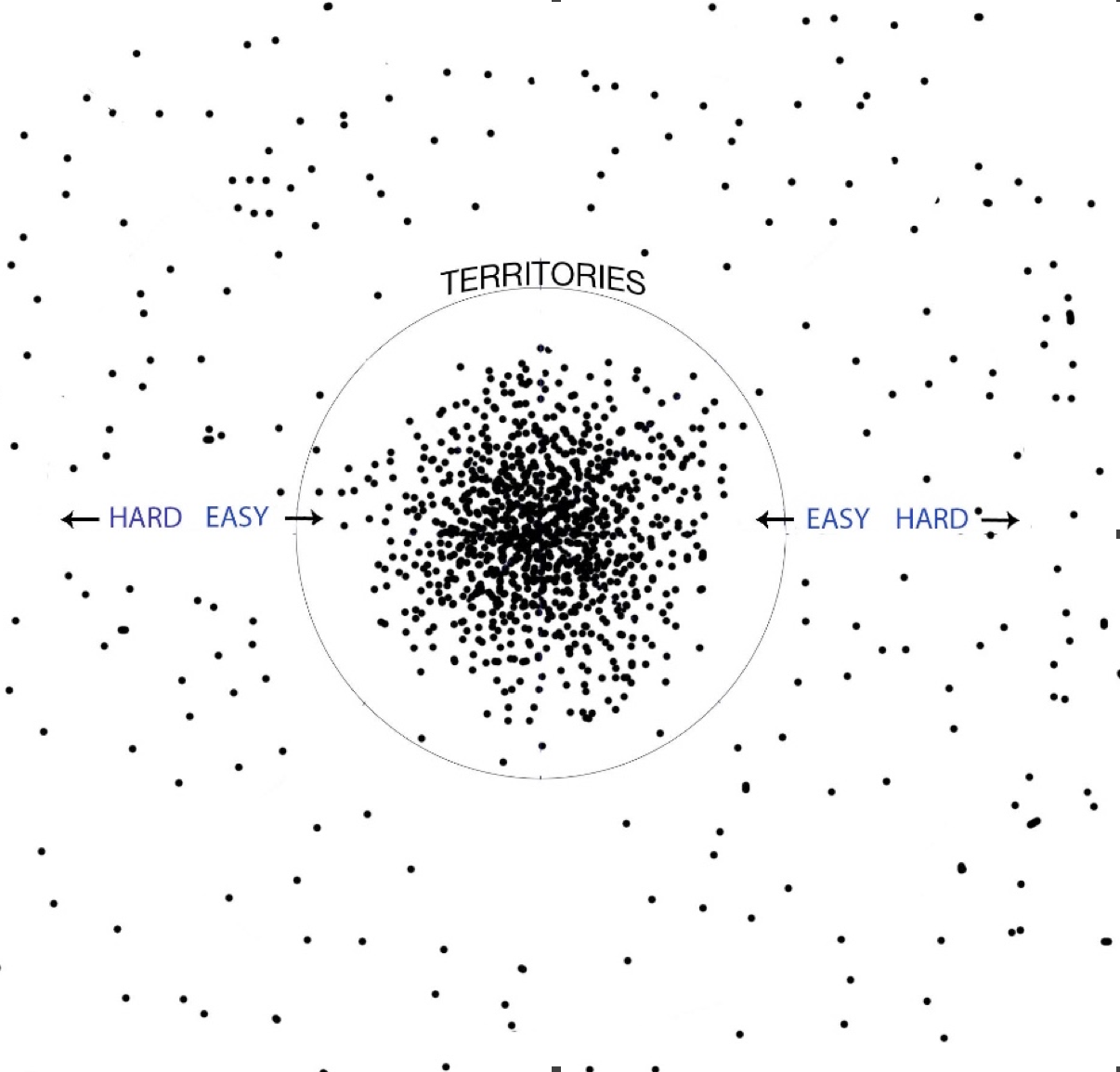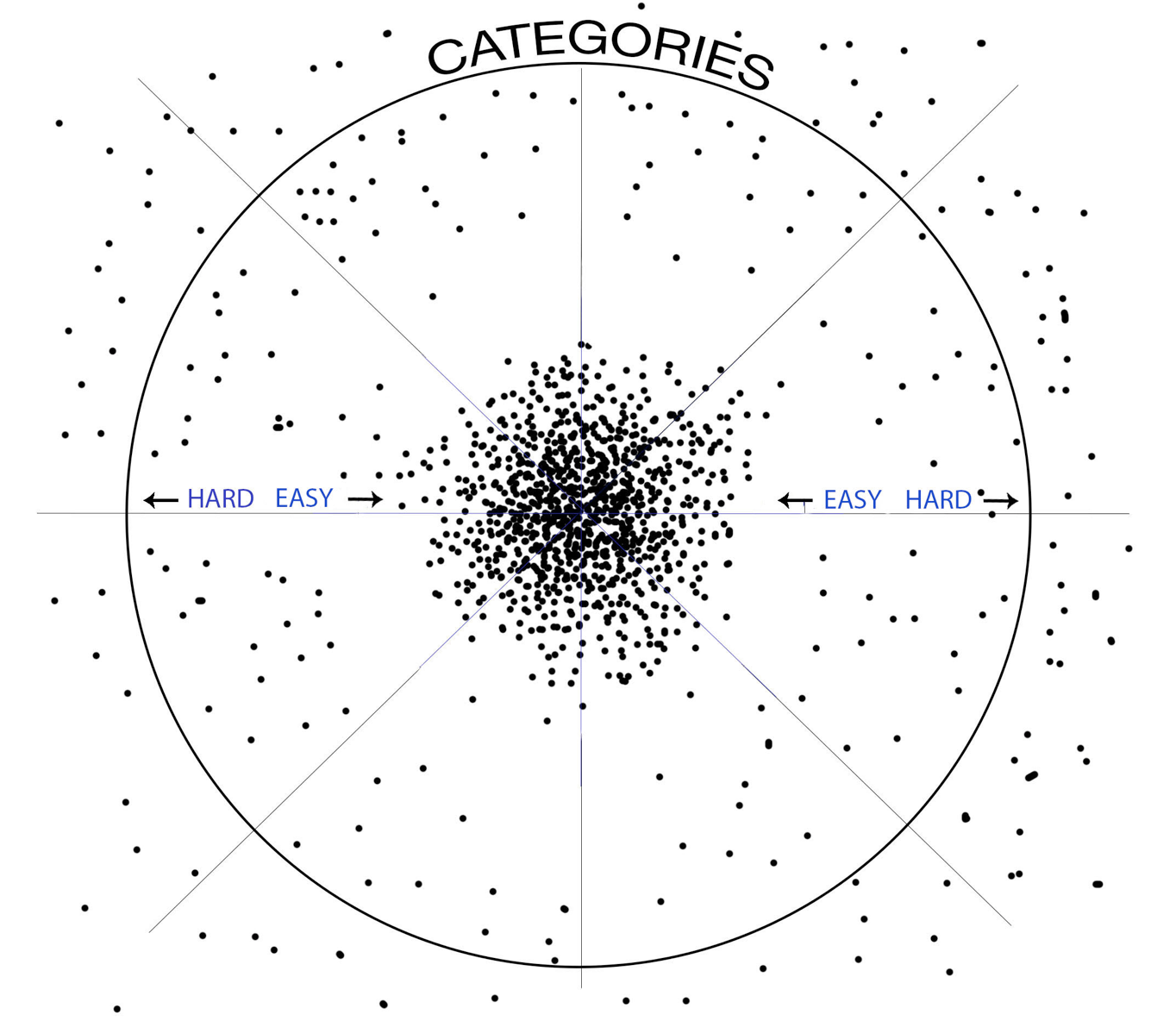
In my ad sales training and coaching, I am asked about categories vs. territories all the time. My collegue Lou DeLone wrote his views on this topic and I thought I would share his insights with you here in our monthly ad sales training blog.
The Case for Sales Categories vs. Sales Territories
By Lou DeLone
As publishers and sales managers, it is our job to create structure and accountability across our sales team. And though, it’s challenging, it is even more important that we nudge our salespeople from their comfort zones. That extra push is what keeps us from losing out on business and makes us profitable.
We want sales people to do more with less, not less with more.
This brings us to a common dilemma among publishers: do we assign our salespeople specific categories of business to call on OR should they crisscross the market, calling on various prospects on protected lists?
Which is the most effective at driving business?
Assigning categories of business is, without a doubt, the more effective sales management strategy, and the mission of this post is to present definitive support for the strength in assigning categories over a free-for-all overlap across the market when selling advertising.
Bottom line: we want salespeople to drill down and call on everyone — even that unpleasant retailer, real estate broker, car dealer or bank president — to maximize the sales universe. It is from this idea that the phrase “workin’ in the ad mines” was born.
 Picture A (left), represents the market with salespeople calling on prospects across all categories of business. The closer to the middle of the circle, the easier the prospect. Everyone on the sales team gravitates toward the easier prospects in the middle, and avoids the difficult prospects on the outside of the circle. “Why call on a rude antique dealer when I can target the restaurant that just opened?” We all know a business owner out there who might seem too unpleasant, require too long a drive, or fall under an obscure category, but salespeople need to bite the bullet and call them. Funeral homes, sleep centers, colonoscopy clinics, and veterinary offices all book schedules, but not without a visit from the account executive assigned to their category.
Picture A (left), represents the market with salespeople calling on prospects across all categories of business. The closer to the middle of the circle, the easier the prospect. Everyone on the sales team gravitates toward the easier prospects in the middle, and avoids the difficult prospects on the outside of the circle. “Why call on a rude antique dealer when I can target the restaurant that just opened?” We all know a business owner out there who might seem too unpleasant, require too long a drive, or fall under an obscure category, but salespeople need to bite the bullet and call them. Funeral homes, sleep centers, colonoscopy clinics, and veterinary offices all book schedules, but not without a visit from the account executive assigned to their category.

In Picture B (left), we see the same market divided into categories. Each piece of the pie represents a category of business assigned to a specific AE. The easier prospects remain in the middle, and the difficult prospects on the outside. However, a larger circle of potential business is activated because the account executive (AE) is pushed to drill down into their, and only their, categories. The AE has to call on all prospects — delightful or not — because the category assignment demands it. And… here comes the new business from funeral homes to veterinary offices.
None of these tactics are easy. Salespeople are never thrilled with new account structures, but this is our job. Publishers tend to combine categories when business is slow, and to keep salespeople happy, when they should be doing the opposite. Salespeople wind up with too much to call on and missed business because they aren’t nudged to drill deeper into their categories. Drilling down is how a salesperson ends up closing six real estate brokers or five car dealers. Stick to your guns and make them accountable. We need our teams to do more with less, not less with more.
The graphics in that post clearly displayed the market expansion created by assigning categories of business to salespeople and pushing them to drill down and call on prospects they would otherwise never get to.
7 Elements of the Categories Sales Strategy
Sellers become consultants: The salesperson becomes an expert on their assigned categories and sells as a consultant, not just another media rep trying to sell a page, spot or board. The salesperson that knows their category establishes credibility in how to leverage their publication on behalf of the business challenges specific to their client. This builds rapport, trust, and respect. All this shows value and helps establish long-term relationships.
Eliminates AE conflict: Account executives are less likely to argue over who got to a prospect first when working in categories. The new car dealership goes to the AE with the automotive category and the new furniture store goes to the AE assigned indoor furniture. Salespeople bring each other leads when they see opportunities in categories other than their own. And the AE who just remodeled their living room still gives the store manager’s business card to the AE who handles home design.
Sells successful special sections: Special sections struggle unless there is a specific account executive assigned to the category specific special section. The publisher statement “We need each AE to sell two pages” rarely works. The special section is assigned to the AE that handles that category covered in the special section. That establishes the accountability we are looking for and gives the AE an immediate reward when they sell the ten pages necessary to allow for the editorial required to make the special section profitable.
Serves as a strategic management tool: Assigning categories gives the publisher much more leverage. The AE with an affinity for fashion will do a great job calling on the fashion category. The AE who previously worked in home sales knows that category, has relationships, and is a good fit to call on homebuilders.
Rewards & motivates: Categories also give the publisher a subtle way to reward and motivate without giving raises and bonuses. The salesperson who arrives in the office every day at 9:01 and leaves the office at 4:58 may do an adequate job but may not be right for the most lucrative categories. The salesperson who is motivated, driven and willing to attend multiple events and luncheons may be the better fit for the most challenging category. And when a salesperson asks for a raise, give them one of the categories currently called on by the publisher.
Protected lists remain: The value of categories is clear, but we don’t want to miss the opportunity to capitalize on salespeople who have significant equity with a prospect outside of their categories — a previous employer or a relative who is a decision maker. This is most common during a launch or when an entire sales team has been hired. If you believe there is an exception to the category assignment that is too good to miss, let the salesperson protect that prospect on their list for six months. If he or she can’t close this prospect by then, there wasn’t much equity, to begin with, and the prospect reverts back to the appropriate category. Eventually, your team has only current advertisers on their protected list and everyone not advertising is in the appropriate category. This minimizes the demoralizing effect of massive protected lists that limit the business new salespeople can call on.
Be cautious of house accounts: House accounts are dreadful. They demoralize your sales team. But sometimes categories need to be assigned to the publisher. He or she should be the best salesperson in the office and having his/her own prospects and clients will help set an example and the tone across the office. Another benefit is that the publisher can reward top sellers by reassigning categories currently in the publisher’s name to the salesperson who has maxed out his or her categories of business and needs more to call on. If managed correctly, he or she will make more money by closing business in the new category than he or she would with a raise.
Assigning salespeople categories pushes them out of their comfort zone and extends the market since they must call on challenging prospects. In addition, it gives you much more depth in how you manage your staff. Yes, categories allow you to be much more strategic in how you assign business, reward salespeople and keep them engaged but categories also give you a level of control and sales management that does not exist if your team is calling across categories and across the market. This is one more multi-level tactic that helps you close more business and make your publication more profitable. And these days we need all the help we can get.
Lou DeLone, aka the Fractional Publisher, is an ad sales consultant and the owner of Whippoorwill Advisors. You can reach him at Lou@whipadvisors.com, or via LinkedIn.
